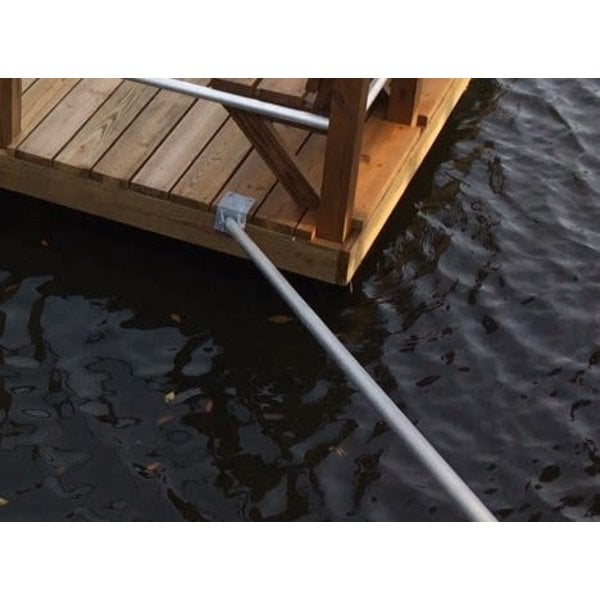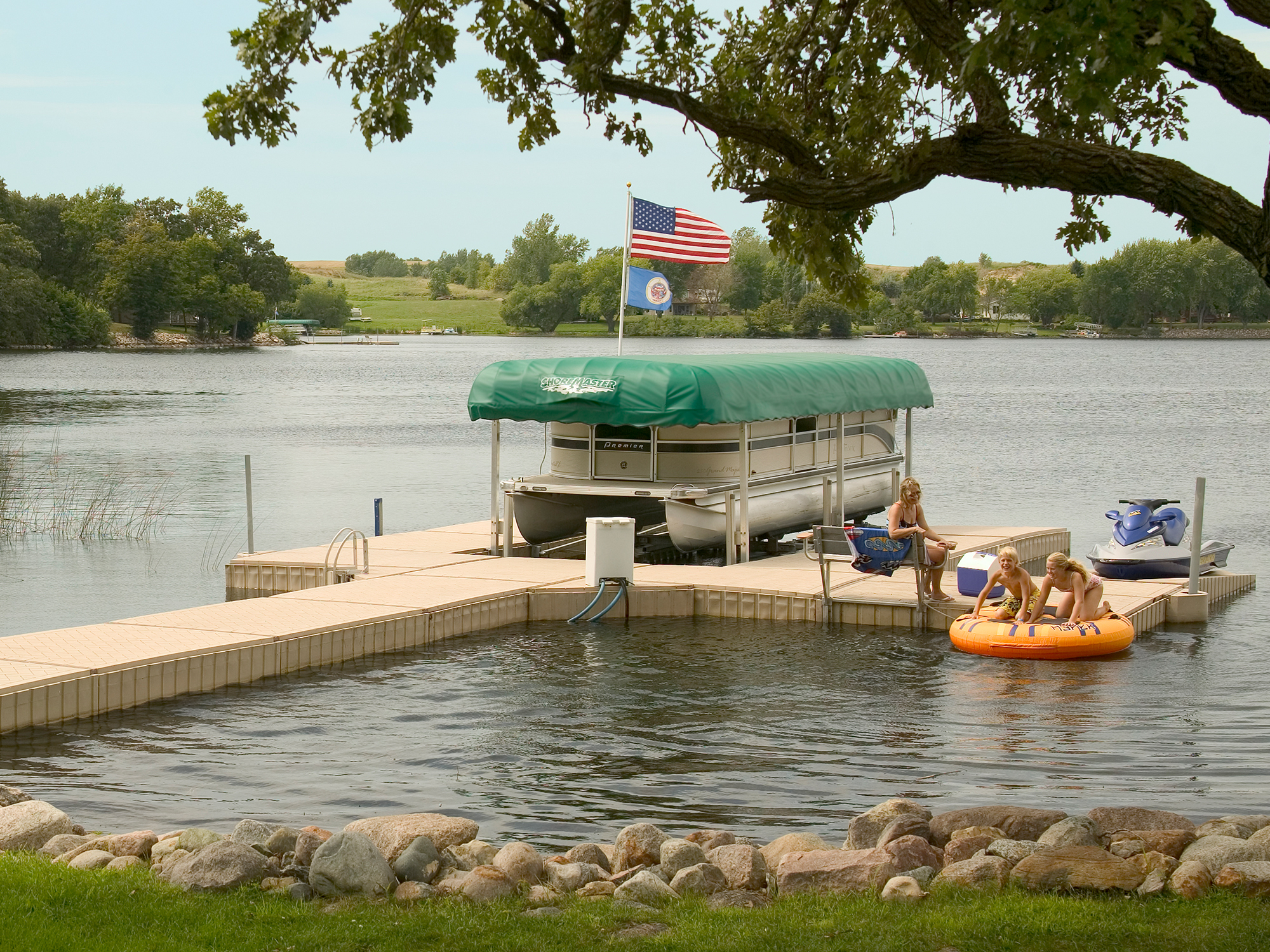Develop the Perfect Docking Solution With Floating Docks
Floating docks present a functional service for a selection of maritime requirements, adjusting perfectly to changing water levels and varied vessel kinds. As we check out the important elements that contribute to the performance of floating docks, numerous crucial variables concerning stability and upkeep will certainly emerge, elevating inquiries regarding just how to optimize your docking experience.

Advantages of Floating Docks
Floating docks deal many advantages that make them an optimal option for numerous maritime applications. Among the primary advantages is their adaptability to changing water degrees. Unlike taken care of docks, floating docks increase and fall with the tide, guaranteeing constant availability for vessels. This function is specifically vital in areas susceptible to significant tidal fluctuations or seasonal water level changes.
Furthermore, floating docks are generally much easier and quicker to install compared to conventional fixed frameworks. Their modular layout enables for uncomplicated setting up and disassembly, facilitating upkeep and moving when required. This flexibility is specifically helpful for short-lived applications or in atmospheres where conditions may alter.
Floating docks also have a tendency to be more ecologically friendly, as they decrease disruption to the seabed and bordering water communities. Their buoyant nature decreases the risk of damages to marine life, advertising a healthier environment. Furthermore, these docks can be customized to fit various vessel dimensions, guaranteeing that they meet certain functional requirements - dock company.
Inevitably, the combination of adaptability, simplicity of installment, and environmental factors to consider makes floating docks a very efficient remedy for a large range of maritime requirements.
Choosing the Right Products
Picking the appropriate materials for floating docks is crucial to make certain sturdiness, stability, and longevity. The option of materials straight influences the dock's performance in different environmental problems, including exposure to water, sunlight, and potential wear from aquatic web traffic.
Usual products made use of for floating docks consist of light weight aluminum, timber, and high-density polyethylene (HDPE) Light weight aluminum is light-weight, corrosion-resistant, and calls for minimal upkeep, making it an excellent choice for longevity. Its first price can be higher compared to various other products.
Wood, while cosmetically attractive and giving a standard appearance, can be vulnerable to rot and insect damage otherwise effectively dealt with. Using pressure-treated timber or naturally long lasting species like cedar or redwood can minimize these problems.
HDPE is a popular choice as a result of its resistance to UV rays and chemicals, together with being eco-friendly. floating dock services. It is light-weight and available in numerous colors, enabling modification
Eventually, the right product option will certainly depend upon particular needs, consisting of budget, wanted aesthetic appeals, and environmental factors to consider. Careful analysis of these factors will certainly result in a resistant and effective floating dock service.
Layout Factors To Consider for Stability
When creating floating docks, making sure security is a basic aspect that can significantly affect their performance and security. Stability in floating dock style is affected by various variables, consisting of buoyancy, weight distribution, and the arrangement of components.
Weight distribution about his is important; uniformly dispersing lots throughout the dock avoids tilting and enhances security. Wider designs can supply boosted stability, particularly in rough water problems, while longer docks may call for added assistances to stop sagging.
Another vital factor to consider is the ecological effect, consisting of wave activity and wind. Integrating features such as sidewalls or skirting can aid alleviate the effects of environmental pressures, maintaining security in unfavorable problems. Ultimately, a mix of thoughtful layout, product option, and understanding of environmental variables will certainly yield a drifting dock that satisfies both security and security demands.
Setup Tips and Techniques

Next, safeguard the necessary permits and follow regional guidelines, which may dictate setup techniques and environmental considerations. Engage a certified contractor experienced in floating dock installments if called for. Use top notch products developed for marine settings to improve durability and longevity.
When placing the dock, align it parallel to the shoreline to promote simple accessibility. Make sure that the anchoring system is robust, using cinder block or helical anchors to stabilize the dock versus wind and wave activity. It's vital to represent seasonal water degree changes, including prospective ice motion in cooler environments.
During the setup, confirm the dock's floatation and stability prior to settling the click reference anchoring. On a regular basis check the installation for any kind of indicators of wear or damage. By adhering to these suggestions and techniques, you can attain a protected, practical, and visually pleasing floating dock installment that satisfies your demands.
Upkeep and Care Guidelines
Preserving and caring for floating docks is vital to lengthening their life-span and making certain risk-free usage. Routine examinations must be carried out to recognize any indicators of wear, damage, or aquatic growth. Seek splits, loose fittings, or stained locations on the dock's surface area, as these issues can endanger architectural honesty.
Cleaning is vital. Make use of a pressure washer to eliminate algae, barnacles, and particles, which can build up with time. For persistent growth, take into consideration environmentally pleasant cleaning agents that won't damage marine life.
Furthermore, examine the mooring lines and anchors frequently to guarantee they are safe and secure and cost-free from rust. Change any torn or harmed lines promptly to maintain stability.
Throughout severe climate, such as storms or freezing problems, take precautionary measures. Safeguard the dock with additional mooring lines and, if practical, eliminate any detachable components to avoid damages.
Conclusion
To conclude, the implementation of floating docks offers a flexible and reliable docking option appropriate for numerous maritime applications. Their adaptability to varying water levels, incorporated with a modular style, enables for simple personalization and relocation. Choosing ideal materials boosts both toughness and aesthetic appeal, while mindful consideration of stability ensures safety and security and long life. With appropriate setup and normal upkeep, floating docks can supply trusted and efficient docking experiences for a wide variety of vessels.
As we check out the crucial components that contribute to the performance of floating docks, numerous key factors relating to security and maintenance will arise, elevating concerns regarding just how to enhance your docking experience. Unlike dealt with docks, floating docks surge and loss with the tide, making sure regular accessibility for vessels.When developing floating docks, ensuring security is a fundamental element that can dramatically affect their capability and safety. Stability in floating dock style is influenced by different variables, consisting of buoyancy, weight distribution, and the setup check out this site of elements. Ultimately, a mix of thoughtful layout, product selection, and understanding of environmental aspects will certainly generate a drifting dock that satisfies both security and safety demands.